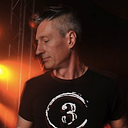Producer Roman Medjanov’s Biblical Epic: His Only Son
Filmmaking, as a profession, is unlike many other vocations in its ability to impact hearts and minds. Those who choose to take up the mantle must embody a level of passion and drive that will carry them through the daily demands that far exceed the typical “nine-to-five.” A filmmaker who exhibits this unique heart’s cadence will seek it out in their collaborators. Writer-director David Helling has made it his life’s mission “to bring Scripture’s Truth from the page to the screen.” For his latest project, a Biblical feature film entitled, His Only Son, David knew it was a tall order that required a partner equipped to handle seemingly insurmountable odds. Being familiar with the unmatched work ethic of Producer Roman Medjanov, Helling specifically requested that he be brought on board — having been noted saying, “As a producer, there is seemingly no limit to Roman’s potential […] This is no exaggeration: his work ethic comes across as superhuman. I have seen his level-headedness stand untempered in the face of astronomical odds time and time again, and I have watched him courageously act with assertion when the stakes are high. But the marrow that flows through it all, is Roman’s strongest and most defining trait — his humility.”
His Only Son is an in-depth look at one of the most scrutinized moments in scripture — When God tells Abraham to sacrifice his son. The controversial nature of the passage was one of the biggest motivating factors in Helling’s desire to bring this account to the screen — not for the sake of controversy, but out of a desire to bring forth a better understanding and shine a light on the purpose of this infamous event. David Helling’s desire is to go beyond the cardboard caricatures that have sadly become far too frequent in the genre over the decades — to show that these were real people, real places, in real history.
Establishing an inherent authenticity to His Only Son and facilitating Davids’ vision was a tall order for any Producer, given the scope of the project. One of the first things Roman had to tackle was locking in famed Lebanese film and television actor Nicolas Mouawad to star in His Only Son. The casting process had already reviewed over 1700 submissions for the titular role before David had brought up Nicolas Mouawad. Roman communicates, “[…] We both agreed that he looked the part. So it was left up to me to contact him and sell him on this project, get him to send us a tape (which he absolutely nailed!), have him agree to fly from Lebanon to shoot in the U.S. and between that secure him the correct Visa for entry into the country. And it was a process, but his incredible character made it all fairly easy once we got to talking.”
This was not the most exotic aspect of piecing together the film. Locations was one of the two core “pillars”, the other being authentic cast, that would determine the films success. As Roman states, “Being a film set out mostly in nature it was a challenge figuring out how we can make production happen in all these remote locations we found. Over half of them didn’t have bathrooms let alone cell service. Not only were we bringing people, gear, trucks, cars, vans, RV’s, but also animals with giant trailers. All those things had to be kept in mind for each location. Would it be cheaper to shoot closer because of travel time? How much time would be spent hiking out at this location? Would it be more productive/cost-effective to shoot elsewhere? This is usually a location manager issue, but given that location was one of the two pillars of making the film great, it became a great concern of mine too. And on the day of shooting each, being so remote, provided new unforeseen challenges, from people taking the wrong turns and getting lost to drastic unexpected weather changes because of high altitude. It was a handful of problem solving.”
The production sought to find locations that best represented the land current Israel would have looked like 4,000 years ago. As such one of the location landed them on the salt flats at the edge of Mojave Desert and Lancaster (California), the shoot was not as dramatic as Abraham’s actual journey but challenging nonetheless. Roman informs, “The process was a constant ping-pong of ‘what about this?’ ‘No we can’t make that work, how about this instead?’ ‘That looks interesting.’ Through this we narrowed it down to what you will see in the film. The final aspect of all this, as with any film, was the budget, how much do we spend behind the camera vs in camera, what is the ideal balance? What does the script dictate vs what does reality say? There were times where I had to go up to David and tell him that if we cut the amount of animals in this scene, he can get this location he originally wanted. This game of give and take was cruel, but crucial in the final success of the film. […] I recall the first day of shooting. Here we had the entire crew, cast, trucks, Moroccan tents, lavish production design, were in a 100+ degree desert heat, people moving generators, setting up lights, applying makeup to the talent, people getting acquainted with each other. This controlled chaos in one place was beautiful, all this hard work and the time put into the project, stress, lack of sleep, all of that was worth seeing as the fruits of labor finally unfolded on the first day of production.”
